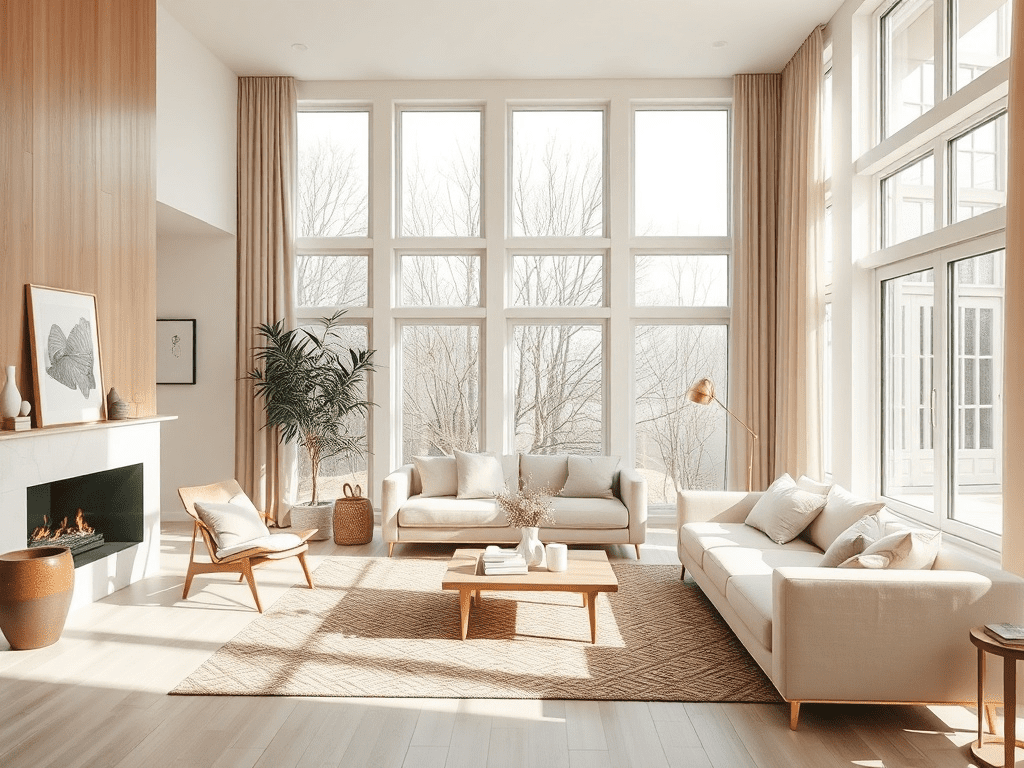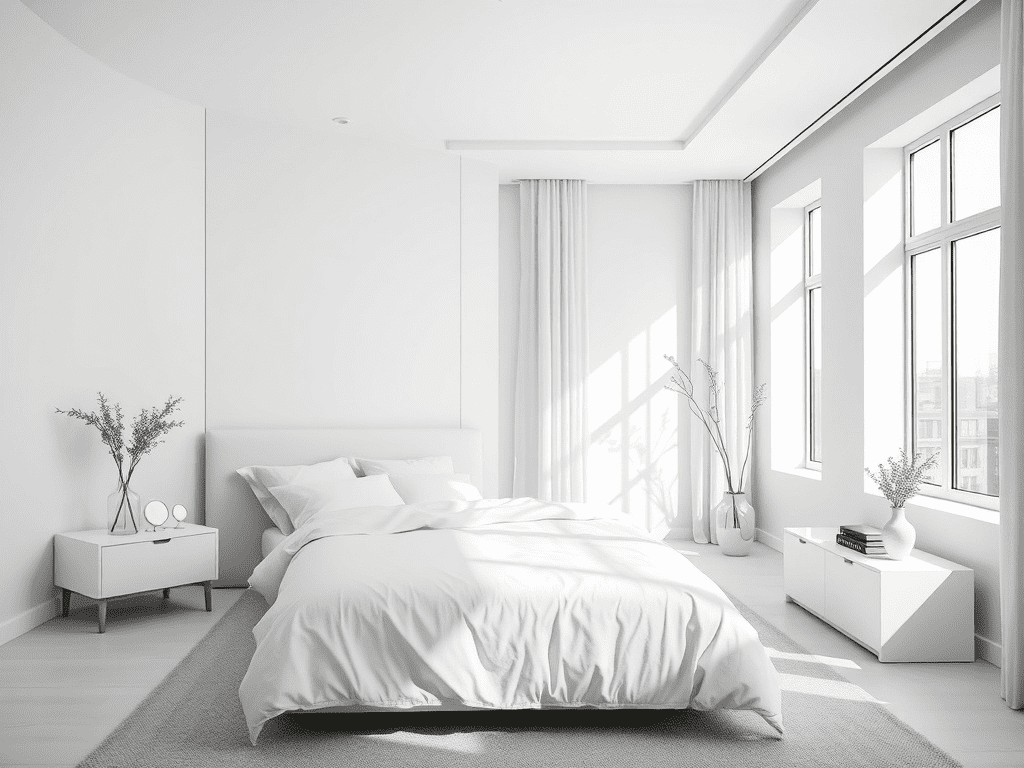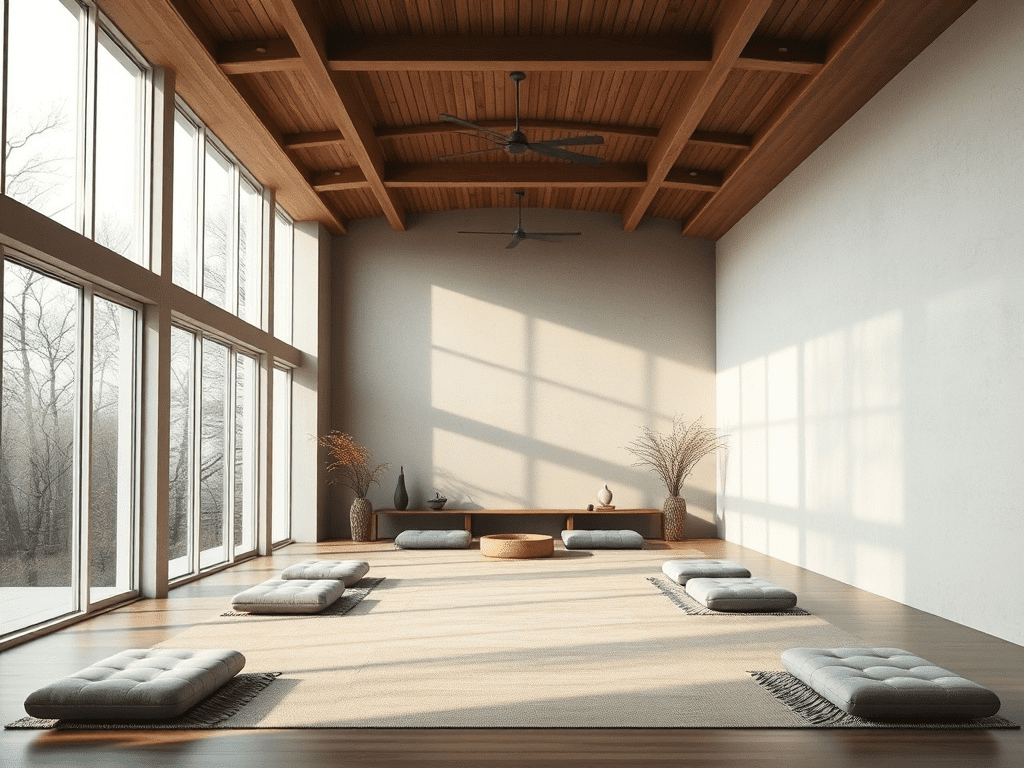Imagine a space that not only looks beautiful but also actively supports your well-being. That’s the power of therapeutic interior design principles, a holistic approach that considers the impact of the built environment on our mental, emotional, and physical health. Forget generic aesthetics; this is about crafting environments that nurture and heal.

What are Therapeutic Interior Design Principles?
Therapeutic interior design principles go beyond mere decoration. They are evidence-based strategies focused on creating spaces that reduce stress, promote relaxation, and enhance overall quality of life. These principles are particularly beneficial for individuals with sensory sensitivities, anxiety, or those in healthcare settings.
Why are Therapeutic Interior Design Principles Important for Well-being?
Our surroundings profoundly affect our mood and behavior. Therapeutic design recognizes this connection, employing elements like color, lighting, and texture to create calming and supportive environments. For example, incorporating biophilic design principles in therapeutic interiors, such as natural light and plants, can reduce stress and improve cognitive function [Environmental Health Perspectives].
Key Elements Considered in Therapeutic Interior Design Principles
Several key elements are carefully considered to craft the most beneficial therapeutic spaces:
- Color Psychology: Understanding how different colors impact mood and behavior is crucial. Blues and greens are often used for their calming effects, while warmer tones can promote feelings of comfort and security [Verywell Mind]. Color psychology in therapeutic interior design is also used to assist with sensory processing disorder.
- Lighting Design: Natural light is prioritized, with adjustable artificial lighting to avoid harshness and glare. Lighting principles in therapeutic interior design are key to reducing eye strain and headaches.
- Sound Acoustics: Minimizing noise and creating a peaceful soundscape is essential, especially in therapeutic interior design principles for mental health clinics.
- Material Selection: Natural, non-toxic, and sustainable materials are preferred to promote health and well-being. Implementing therapeutic interior design principles in hospitals includes considerations for durability and ease of cleaning.
- Space Planning: Layouts should be intuitive, easy to navigate, and promote a sense of safety and control. Accessibility guidelines for therapeutic interior design are important here.
- Biophilic Design: Integrating natural elements like plants, water features, and natural textures connects us to nature and reduces stress.
How do Therapeutic Interior Design Principles Differ from Standard Interior Design?
While standard interior design focuses primarily on aesthetics, therapeutic design prioritizes the well-being of the occupants. It’s an evidence-based approach that uses design to actively promote healing and improve quality of life. The impact of therapeutic interior design principles on well-being can be substantial.

Can Therapeutic Interior Design Principles Be Applied in Any Home?
Absolutely! Whether you’re designing a new home or renovating an existing space, therapeutic interior design principles can be incorporated to create a more supportive and nurturing environment. Explain therapeutic interior design principles for my home? Start with small changes like adding plants, decluttering, and optimizing natural light. Therapeutic interior design principles for anxiety reduction can be particularly effective in home environments.
What are Some Examples of Therapeutic Interior Design Principles in Practice?
Examples of therapeutic interior design principles for dementia care include creating clearly defined pathways, using contrasting colors to highlight important features, and providing comfortable seating areas. Therapeutic interior design principles for senior living facilities also emphasize safety and ease of navigation. Therapeutic interior design principles for autism spectrum disorder often focus on creating calm, predictable environments with minimal sensory overload.
How do Color Choices Relate to Therapeutic Interior Design Principles?
Color choices are vital, as mentioned earlier. Cool colors like blues and greens tend to be calming and promote relaxation, making them ideal for bedrooms and meditation spaces. Warmer colors, such as yellows and oranges, can be energizing and uplifting, suitable for social areas. It’s important to consider the specific needs and preferences of the individuals using the space.

How can Lighting be Used as a Therapeutic Interior Design Principle?
Lighting plays a crucial role in regulating our circadian rhythms and influencing our mood. Natural light is always best, but when it’s not available, full-spectrum artificial lighting can mimic its benefits. Dimmable lights allow for adjusting the intensity to suit different activities and times of day. Avoid harsh fluorescent lighting, which can cause eye strain and headaches.
FAQ: Therapeutic Interior Design Principles
What are therapeutic interior design principles?
Therapeutic interior design principles are evidence-based design strategies focused on creating spaces that support mental, emotional, and physical well-being.
Why are therapeutic interior design principles important for well-being?
Because our surroundings profoundly impact our mood and behavior. Therapeutic design uses elements like color, lighting, and texture to create calming and supportive environments.
What key elements are considered in therapeutic interior design principles?
Key elements include color psychology, lighting design, sound acoustics, material selection, space planning, and biophilic design.
How do therapeutic interior design principles differ from standard interior design?
Standard interior design focuses primarily on aesthetics, while therapeutic design prioritizes the well-being of the occupants, using design to actively promote healing and improve quality of life.
Can therapeutic interior design principles be applied in any home?
Yes! They can be incorporated into any space to create a more supportive and nurturing environment.
What are some examples of therapeutic interior design principles in practice?
Examples include creating clearly defined pathways in dementia care, using calming colors in bedrooms, and incorporating natural light and plants in living spaces. The sustainable materials in therapeutic interior design are also very important.
How do color choices relate to therapeutic interior design principles?
Color choices are crucial as they impact mood and behavior. Cool colors like blues and greens are calming, while warmer colors can be energizing.
How can lighting be used as a Therapeutic Interior Design Principle?
Lighting regulates our circadian rhythms and influences our mood. Prioritize natural light and use dimmable, full-spectrum artificial lighting when natural light is unavailable.
The Future of Therapeutic Interior Design
As our understanding of the connection between the built environment and well-being grows, therapeutic interior design principles will become increasingly important. By creating spaces that nurture and support us, we can improve our health, happiness, and overall quality of life. Evidence-based therapeutic interior design principles are the way of the future. What is the goal of therapeutic interior design principles? To enhance well being and promote healthy habits.
Ready to transform your space? Explore the possibilities of therapeutic interior design and create an environment that truly supports your well-being.
Disclaimer: This information is for general knowledge and informational purposes only, and does not constitute medical advice. It is essential to consult with a qualified healthcare professional for any health concerns or before making any decisions related to your health or treatment.
| Principle | Description | Example |
|---|---|---|
| Color | Using colors to influence mood | Painting a bedroom in calming blues and greens |
| Lighting | Optimizing natural and artificial light | Installing dimmable lights and maximizing sunlight exposure |
| Acoustics | Minimizing noise and creating a peaceful soundscape | Using sound-absorbing materials and reducing echo |
| Biophilic Design | Connecting with nature through design | Adding indoor plants and water features |


